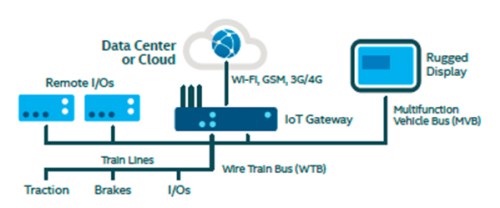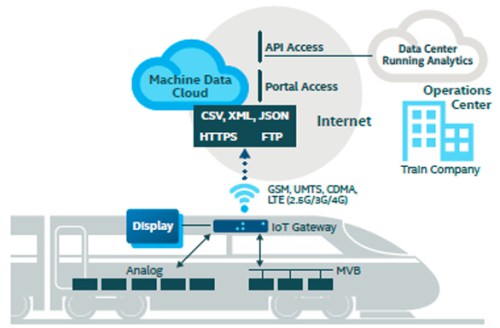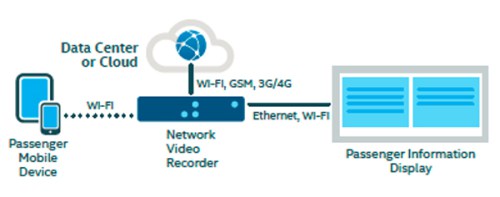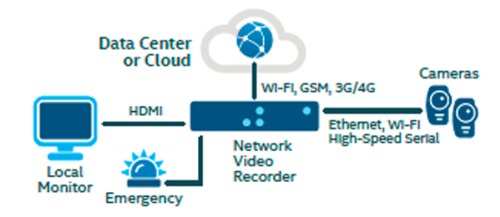The IoT is everywhere. This may sound a bit scary – maybe it actually IS a bit scary – but it’s true. Do you know what is driving the world today? It’s not money, technology or even people – it’s data. It’s the same with transportation: What’s fueling modern mass transportation systems isn’t just petroleum or electricity – it’s data. Today’s trains aren’t like the simple coal-burning steam engines from old storybooks. Digital information has become the life blood of the transportation industry. Digital networks of computer chips and sensors control nearly every aspect of today’s transportation market. And the IoT provides the connectivity, security, interoperability, analytics, and monetization which are needed to intelligently monitor all processes.
But is that strictly necessary? Reflecting on the past years (with no IoT), didn`t we come safely from A to B? Mostly we did, but now sensor technologies are helping make things even safer (and more efficient). Bus lines, truck fleets, trains and metros are increasingly using more electronic systems to lower transportation system cost, improve reliability, and increase passenger comfort and services. Within this blog, I will show you three transportation usage models geared toward improving efficiency, security, and the customer experience (for more information you can also have a look at the Intel Solution Blueprint ‘Improving Transportation Safety, Efficiency, and the Customer Experience with the Internet of Things’ here).
1. Train Management System
For the conductor it is absolutely essential that the status of his train can be seen clearly at a glance. Have all doors been closed correctly? How is the temperature in the compartments? Are traction and brakes OK? There is no need to worry, because the train management system monitors and runs diagnostics on a lot of non-critical systems in and around the operator’s cab. Throughout the entire journey, the driver can view the vehicle status, speed, and – if something is wrong – warnings on a ruggedized display. Figure 2 shows an IoT gateway that collects and sends data to a machine data cloud via a secure protocol (such as HTTPS). Cloud hosted web-based applications can remotely monitor, manage, and control train devices. The data is then transferred from the cloud to the train company’s data center, where it can be processed further by logistics, diagnostics, and analytics applications.

2. Passenger Service Systems
Of course also in trains the motto applies: customer satisfaction is the key factor to secure the position in the market. In step with technological change and an increasingly connected world, the customers now have higher expectations when it comes to service and physical comfort. IoT-technologies can help to significantly improve the customer experience on trains and buses. For instance, by informing passengers with up-to-the-minute updates on route stops, schedules, and train changes. With Internet-on-train the passengers on board can feel as if they were at their sofa back home. Checking emails, chatting on Facebook, reading news or even enjoy video on demand – everybody can do as he pleases. And because a lot of passengers love to be entertained during a long journey, train companies can generate incremental revenue by streaming content to them for a fee. All these usage models are made possible by a local IoT Gateway & Media Server that connects passengers to the Internet and service providers, as shown in Figure 3 (there called “Network Video Recorder”).

Figure 2: Machine Data Movement

Figure 3: Passenger Service System Usage Model
3. Video Surveillance
Ensuring a high level of safety is essential in the transportation industry. For more and more customers safety and security are even the top priority. So to stay ahead of the growing demand for passenger security, cameras and network video recorders should observe stations and platform. Video recordings in local trains can help to prevent vandalism. With cameras train companies can also monitor individual cars, track conditions and component wear. If – for example – a bus driver is in the wrong gear, has passed a speed threshold, or is idling too long video can provide alerts. This information can be used to ensure safe driving and increase fuel economy by up to 10 percent. A IoT Gateway & Media Server captures and records streams from cameras, which can be sent to a local monitor, emergency response team, data center, the cloud, etc., as shown in Figure 4.

Figure 4: Video Surveillance Usage Model
How was your last train journey? Did you profit from the IoT?

{{comment.comment}}